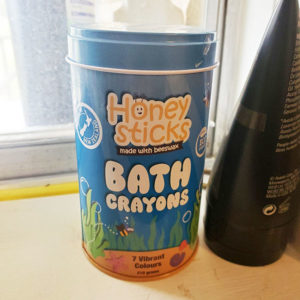 May 15, 2024–As a Cicerone of Grandpeople, I have renewed my acquaintance with those waxy rainbows from childhood, Crayola-brand Crayons.
May 15, 2024–As a Cicerone of Grandpeople, I have renewed my acquaintance with those waxy rainbows from childhood, Crayola-brand Crayons.
No American kid will ever forget the excitement of opening a new 16-pack of crayons–the pointed tips, the pristine wrappers, that new-crayon smell, and our first encounter with shades with mysterious names like Burnt Umber and Raw Sienna. It was almost a shame to use them, because you knew they would end up as broken, naked remnants in the purgatory of the coffee can of discarded crayons.
And they had to be Crayola brand. Rose Art and others were cheaper, but they lacked the color saturation and coolness factor of Crayola. Pulling out a box of Rose Art in crafts class was like wearing Traxx sneakers to basketball practice–you were just telling everyone you weren’t that talented.
Today, shopping the discount aisle of art supplies reveals an incomprehensible expansion of the Crayola brand. Beyond the accustomed larger sized and increased count of colors, the line now includes themes we could not have imagined back in third grade.
To wit:
- Gem Tones (Crayons in colors of gemstones)
- Florescent
- Neon
- Glow in the Dark
- Glitter
- Metallic
Of course, there are now Multicultural Crayons, with eight variations on what we knew as “flesh,” but matched no one of any ethnicity that we grew up with, or even saw on Sesame Street, including the puppets.
The marketing minds at Big Crayon soon realized our attachment to their brand went beyond colors, to include that other powerful motivator of memory and behavior–our sense of smell.
It was the halcyon days of Magic Scents. This must have happened right around the time that scientist back in the crayon lab discovered psychedelic drugs. Suddenly, everyone was seeing scents and smelling colors. Hey, why not take it to the dime store shelves? Middle America was expanding their consciousness.
At first, the aromas captured were obvious and safe. Strawberry, Cherry, Coconut, Grape, Orange, Peach, Lemon, Lime. We’re talking Jell-O level marketing here.
Some smells sniffed at the edges. Lilac morphed into Wisteria, Shampoo, and Soap. Coconut and Baby Powder were pleasing scents paired with white, which was otherwise worthless as a color.
But the science wizards didn’t stop there. When you have reach more than 200 colors produced since 1903, you must think outside the breadbox. Hence Pine (Green), New Car (Blue), and Smoke (Gray),
Some color/smells were downright earthy. In fact one color was called Earth, though my favorite is Dirt (Brown), another cherished memory from child.
That leads us to:
- Earthworm (Brick Red)
- Pet Shop (another shade of Brown)
- Saw Dust (Peach)
- Sharpening Pencils (Goldenrod, like the notebook I guess)
Not sure why anyone would choose Wash the Dog (Dandelion) for the color or the smell.
And one that will wrinkle any grandchild’s nose, Grandma’s Perfume (Orange).
At this point in crayon history, the class clowns took over in the lab. May I introduce you to Silly Scents:
- Alien Armpit
- Big Foot Feet
- Booger Buster
- Gargoyle Gas
- Mummy’s Tomb
- Ogre Odor
- Sasquatch Socks
I’d like to think there is no place left to go on the color/scent spectrum. But I’m sure crayon engineers are already at work on the next wave of crayon innovation.
Color us curious.